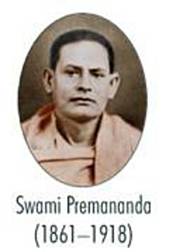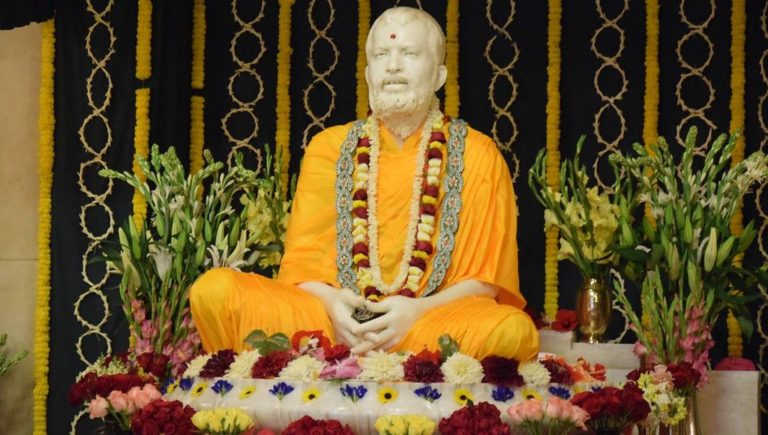We have much pleasure in presenting to the public “Sri Ramakrishna the Great Master”—the most comprehensive, authentic and critical estimate of the life, Sadhana and teachings of Bhagavan Sri Ramakrishna. Sixty-six years have rolled down the stream of time since Sri Ramakrishna left the mortal coil. But the wave of spirituality raised by his life, has touched even the distant shores of both the hemispheres and is resurgent still in all its native potency in the thought-life of the different countries of the civilized world of today. In India his name has become a household word, a symbol of hope and solace and a sacred Mantra to conjure with. His inspired utterances have brought light where utter darkness prevailed before, solace to many a suffering soul and peace to many a distracted mind. The life which could have such a marvellous influence within such a short period, it is needless to say, is of unprecedented potency, whose full depth and significance will take ages to get revealed to humanity.
Descriptions of this wonderful life were given to the world by his various disciples and admirers from time to time in different languages since his disappearance from the earth. But none of them embodied a detailed account of this unique personality. Srimat Swami Saradanandaji Maharaj, a direct disciple of Sri Ramakrishna, and General Secretary of the Ramakrishna Math and Mission from its very beginning to his passing away in 1927, feeling the necessity of such a biography, brought out five volumes in Bengali under the caption of Sri Sri Ramakrishna Lila-prasanga, which contain many unpublished details of the life of the Master and can fairly be called an exhaustive treatment of the subject. The Swami wanted to write an English version of his Bengali work, and, in fact, he translated a few chapters which appeared in the two periodicals of the Mission, the Vedanta Kesari and the Prabuddha Bharata, but owing to his illness and various other causes, he could not complete the work. The eagerness of the general public outside Bengal to know more details of the wonderful life of the Master was being felt keenly and we thought we would be doing some service to our eager readers, if not to humanity at large, if we would present them with a faithful and literal English translation of the beautiful Bengali biography.
Srimat Swami Jagadanandaji, a very senior and learned monk of our Order, accepted at our request this Herculean task of translating the whole work of five volumes into English and left us under a deep debt of gratitude. It is a matter of great regret that he passed away last December before this remarkable work of his devotion could see the light of day. He took up this translation when he was verging on seventy, but finished the work in an incredibly short time and passed it on to the Editors. A disciple of the Holy Mother, one who knew the revered Swami Saradanandaji Maharaj and many other direct disciples of Sri Ramakrishna intimately, the Swami is known to many readers of our literature and students of Vedanta as a very good teacher of the Scriptures, as the anonymous editor of many religious books and as the translator of some Vedantic Text-books like Sri Sankaracharya’s Upadesha Sahasri. His illuminative classes were a treat to all, young and old, lay and monastic, students in the Uttarakhand. One would always notice in him a happy but rare combination of Jnana and Bhakti. Untiring in work, uncompromising in his adherence to the Siddhantas (conclusions) of Vedanta he was throughout conspicuous by his great devotion to the Master and the Holy Mother.
Swami Nirvedananda, the learned writer of “Sri Ramakrishna and Spiritual Renaissance” (in the Cultural Heritage of India, Vol. II) and other books, has written a short but beautiful life of Srimat Swami Saradanandaji Maharaj. This will give the reader an inkling of the real personality of the Author of the book and will partly serve the purpose of an introduction to it. We are much beholden to him for this valuable addition to this work.
Prof. K. Subramanyam, M.A., L.T., Vice-Principal, Vivekananda College, Madras, has kindly gone through the entire manuscript and has ably edited it for us. He deserves our hearty thanks for this noble act.
Dr. Nandalal Bose, the famous artist of Santiniketan (Visva-bharati), has very kindly drawn the Dust cover (Panchavati at Dakshineswar) as a labour of love. We are indeed grateful to him.
In bringing out such a big volume, we have received substantial help in various ways from many lay and monastic friends who prefer to remain unknown soldiers. We offer our sincere thanks to them.
A word about the book itself: Sri Sri Ramakrishna Lila-prasanga holds a place, unique of its kind in hagiography. The life-story of a divine personality worshipped by millions as an Incarnation of God has never been written in this wise by any one of his apostles. Yet the reader will notice how the author has made the book so reliable and interesting by giving it a modern touch and using the scientific method all through. The book is not simply a biography of the latest Incarnation of the modern age; it combines a biography with a lucid study of the various cults of religion, mysticism and philosophy obtaining in India and elsewhere from the prehistoric times down to the modern era. The Subject-matter, the life of Sri Ramakrishna, is nothing short of an encyclopaedia of religion and philosophy.
It will not be out of place to make some mention of the Tantras, the sacred literature of the Shaktas of Bengal and elsewhere. Sir John Woodroffe alias Arthur Avalon, and his Indian collaborators have made the Tantras partly available to the English-reading public. As they have used the scientific method, their studies of the Tantras have much appeal to the modern mind. Sri Ramakrishna practised all the disciplines enjoined in the Sixty-four principal Tantras under the guidance of a good teacher. Some practices of the Tantras known as “left” which were not entirely ruled out by Sri Ramakrishna have been actually reoriented by him. Much of modern scientific teaching is consonant with the fundamental teaching of the Tantras. Things or practices which seem repulsive to the modern mind are not actually so. Readers, endowed with an exalted vision and the modern spirit of enquiry into truth, will be able to understand that the Tantric aspirants’ practices involving contacts with what are termed lowly, bad, ugly and vulgar, helped them to sublimate to the extent of making them realize the divine power which is always high, true, good and beautiful. We crave the thoughtfulness of the readers in their study of the Tantric chapter of Sri Ramakrishna’s Sadhana as we have not sacrificed the beauty and the substance of that episode to satisfy the claims of “modern” taste.
A right attitude is also necessary to enter into the spirit of Sri Ramakrishna’s Sadhana according to the Madhura Bhava of the Vaishnava school. We trust our readers will never lack it. “Where you cannot unriddle, learn to trust” is an adage that may be very helpful here. There is nothing queer or strange in the flights of the genius of one of the greatest master-mystics of the world like Sri Ramakrishna.
May a serious perusal of this new book inspire humanity to take a step forward on its march to Truth!
Sri Ramakrishna Math Mylapore, Madras-4
October, 1952.
PUBLISHER

